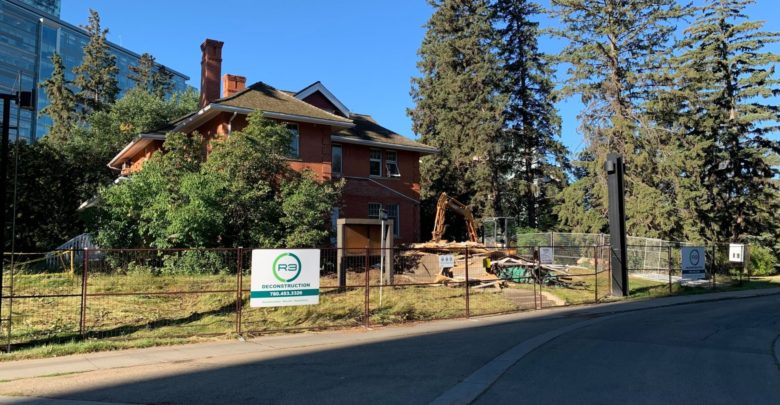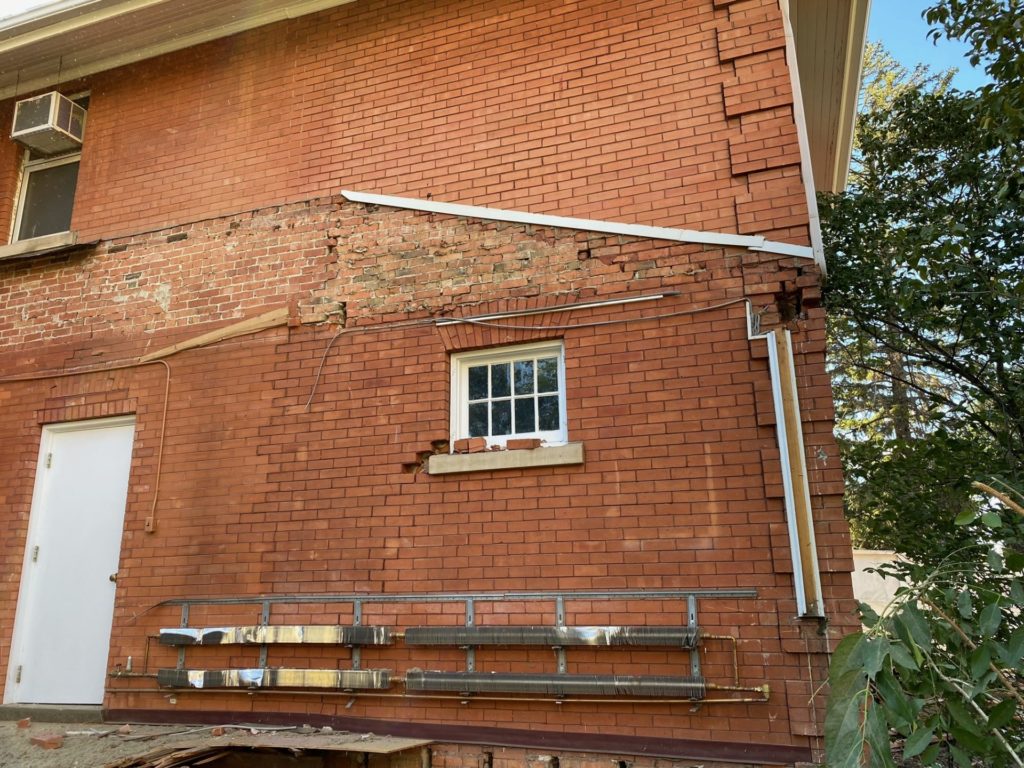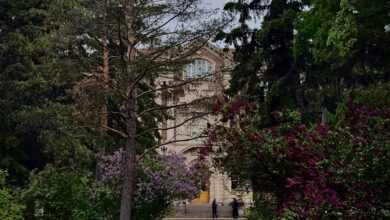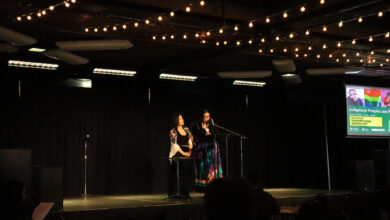U of A Ring House materials will go towards development of McCauley community
The area will be returned to green space while the university considers future development.
 Martin Bendico
Martin BendicoThe Ring Houses and trees located on the northwest corner of the University of Alberta North Campus are currently being removed by Primavera Development Group. Components of the houses will go towards a community development in McCauley.
In 2021, the Ring Houses and two decommissioned houses from East Campus Village were purchased by Primavera. These houses are currently being removed and will have materials that will go towards a new arts and community hub in the McCauley community.
A U of A webpage of Ring House updates, said the university had limited success when trying to find other uses for the houses. Primavera purchased the houses for $1 each and is responsible for the costs of removal and relocation. The university directed any questions regarding the removal of the Ring Houses to Primavera.
After the removal, the northwest corner of campus will be returned to green space. The university will then consider any future development for the space as there are no current plans.
Primavera president explains removal project, decision to create new structure
Kenneth Cantor, president of Primavera Development Group, explained that they explored moving the houses in pieces.
“We did spend a great deal of time and effort with our architects and engineers, contractors and house movers … to see if they might be moved in pieces,” Cantor said in a comment. “[If not moved in pieces], they are simply too big and too heavy to move.”
Additionally, Cantor said it would be “logistically impossible” if the houses were moved in pieces because it would take 12 to 16 separate moves which would require shutting down streets, moving power lines, and traffic signals. He added that Primavera explored the option of moving the sections by helicopter rather than road before reaching the conclusion that they will instead use materials from the houses to make a new structure.
According to Cantor, the four Ring Houses and two Garneau houses would “lose all of their building code grandfathering” once they moved locations. He explained the houses would not be able to be occupied without updating them to the current building and fire code requirements for handicap access and fire separations.
“[Updating them is] something that would be impossible without deconstructing them in their new location even if they were moved,” Cantor said.
Cantor added that the houses were not as “structurally sound as they look,” and supplied the following photo.

Primavera has stored as many original interior elements as possible. The items have been “carefully deconstructed and protected” until they are able to be incorporated into a new project or “otherwise retained.”
Material that will be demolished will be limited to material that “can’t readily be reused or recycled,” Cantor said.
“We expect to have at least one sea can and approximately 120 pallets of material that will not only be relocated and reused, the embodied energy in them will be kept out of the landfill,” Cantor said.
PearlAnn Reichwein, U of A historian in the faculty of kinesiology, sport, and recreation and co-chair of the Ring House Coalition, said the removal of the Ring Houses was “regrettable.” The Ring House Coalition is a group concerned about the fate of the Ring Houses and has advocated for the preservation of the houses.
Reichwein said that the buildings serve as a connection to the past, and that heritage preservation and redevelopment can be “complementary and mutually beneficial.”
“We need to aim higher and act on best practices and standards for heritage preservation because current decisions are having a heavy impact on Alberta’s cultural assets at the University of Alberta as a public institution,” Reichwein said.
Reichwein said that the incorporation of the materials in the new project does not constitute heritage preservation.
“Based on what I’ve read in the news, some of the bricks may be reused as facing material in a new development. This does not constitute heritage preservation. Indeed, the … Ring Houses will be demolished,” Reichwein said.
Connor J. Thompson, a U of A PhD student in history, expressed that he is “quite sad” to see the houses being removed.
“The Ring Houses are some of the most historically significant buildings still on the university campus, in terms of who lived in them, the services they provided, and so on,” Thompson said.
He added that the removal of the houses and reusing the materials does not preserve the overall facade of the houses.
“It’s the use of a few bricks, maybe some wood, maybe some components to build a new building. So the houses essentially are being demolished.”
Thompson said the project has left him unsure if the university administration is listening to the community.
“It really is sad to me … I think [this is] a very profound symbol [the] administration is not listening to the university community or the broader community.”
Removal of mature trees at Ring House sites “due to their health”
Trees at the Ring House sites are also being removed. When asked about the removal, the university said that trees are only removed as a “last resort.” Campus trees are assessed for removal or trimming if they are deemed unhealthy, are in poor condition, or pose a significant safety risk.
“Following an external certified arborist’s assessment, four mature trees recently required removal near the Ring Houses due to their health,” the university said in a comment.
As part of the U of A’s landscape plan, the university plans to replace each tree removed with two young trees of a similar type.
The Ring House coalition said the trees are “part of our connection to the land and city.”
“[The trees] are valued green space and significant to sustainability and community. They are the trees of our grandparents and future generations,” the Ring House Coalition said in a statement.
During the removal of the trees, the group called on the university and community for the halt of the tree removals.
“Cutting down heritage trees on Saskatchewan Drive at the [U of A campus] is a lamentable and a serious gap in the University’s heritage stewardship for a unique cultural landscape.”




